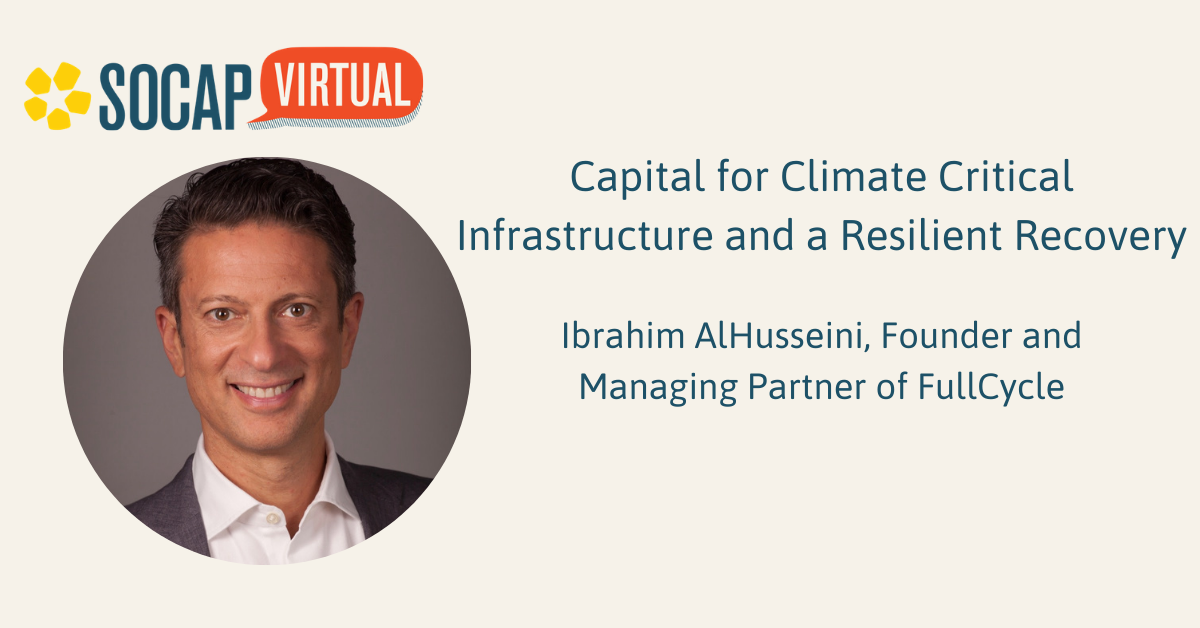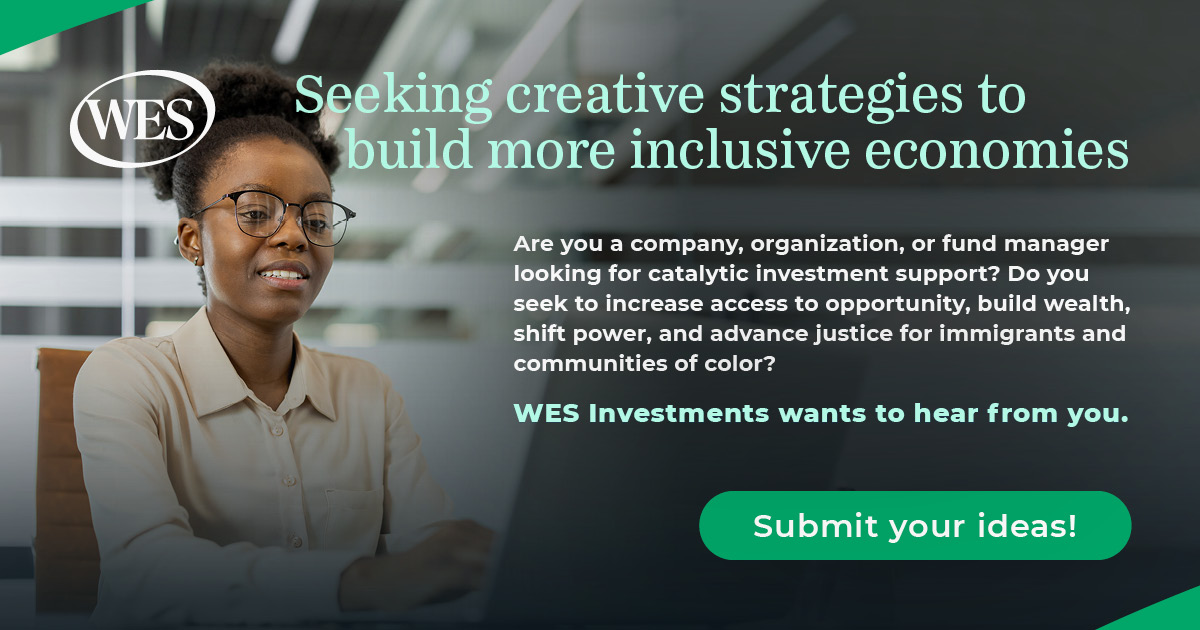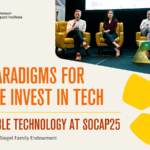Ibrahim AlHusseini Explains How to Transform the Economy to Be More Regenerative
In order to combat climate change and avoid the worst impacts of the crisis, we need to completely overhaul our economic and societal systems while simultaneously addressing environmentally harmful human behaviors and activities. While this is a daunting challenge, it also presents a huge opportunity to create a more equitable, just economy that considers the interests of all stakeholders. By centering climate justice and regenerative innovation, we can create a more resilient economy and ensure our planet is healthy for generations to come.
A major key to transforming our economy is connecting impact investors with social entrepreneurs who are creating the “climate critical technologies” that will help mitigate, address, and reverse the effects of climate change. In a Lightning Bolt session for SOCAP20 Virtual, Ibrahim AlHusseini, founder and managing partner of FullCycle Climate Partners, shared his thoughts on what it will take to accelerate the creation and adoption of these technologies, and how his fund is working to facilitate this shift.
“If we can set aside some of these old legacy ways of doing business and be open to new ways of doing business, we will realize a world that works for everyone and everything, a world with abundant fresh water, clean air and biodiversity that has flourished for millennia,” AlHusseini said. “That’s a world worth fighting for, and that’s a world I think we’d all be excited to live in and leave to future generations.”
Watch the session or read the full transcript below.
Watch “Capital for Climate Critical Infrastructure and a Resilient Recovery”
Ibrahim AlHusseini: I wish I was there with you in person and thank you SOCAP for the opportunity to speak to you through video. When my team and I got together to design this talk, we thought it would be helpful to answer the questions we usually get from different types of investors. We hope it’s helpful.
I’m Ibrahim AlHusseini. I’m the managing partner of FullCycle Climate Partners. We’re a growth equity real asset fund. I started the fund, or the first iteration of the fund, in 2013 and the current iteration of the fund in 2019. The purpose of it was to accelerate the deployment of what we call climate critical technologies, because we needed a lever from the private sector that was going to address climate change in a way that was specifically designed for it.
Investing in the corporate equity of companies was a great way to make money and support companies, but it wasn’t the right tool for climate change. The way I see the industry today is on one end, we have what’s called negative screening, which is just telling our advisors not to put us into things we’re not interested in like fossil fuels, private prisons, firearms, tobacco, pornography, and things like that. Then we have this new term that is permeating the space called ESG, which is a fantastic term. These metrics are what corporations can abide by or sign up to that make them do less harm, which ESG to me as an impact investor just means doing less harm. We create widget X and we do it in a more responsible way.
To me, what that means is the house is on fire and we’re downgrading from a flamethrower to a blowtorch. I’ll take it, and we should take it and be grateful, but it’s not solving the problem. It’s still adding to the problem.
Then we have these haphazard funds, haphazard good funds, which is, they usually have a great name attached to them that give comfort to investors, and then they throw in a lot of fantastic companies that do a lot of good, things like VOC free paint, a vaccine for ringworm, a company that has more efficiency in photovoltaic cells. All of that is great and they throw it into one big basket and market it and those get filled out pretty quickly because they have a great name attached to them, great economics, great stories.
I’m an LP in a lot of those. Now, one of the things that’s missing in those is prioritization. See, climate change is super foundational. The reason why we even have a civilization and inside the civilization and economy is because we lived through an age called the Holocene, which is 12,000 years of climate stability. That allowed us to build cities and do all the things that we take for granted.
Now, unfortunately, we disrupted that stability, and now we’re entering the Anthropocene, which is the age of humans because we’ve had such an outsized effect on climate change. What we do is we go all the way to the far end of the impact spectrum. Climate change needed a new model because it had to take into account the condensed time frame that we had to address the problem. I went looking for a product like FullCycle, and I couldn’t find it. That’s why I created the fund in the first place with my partners. I’m so grateful we did because the market finally has a solution to how to address climate change in the nuanced approach that’s required to address it.
We’ve had a lot of success so far, but it’s still been a little bit of a heavy lift. I think the reason for that is legacy inertia. One of the biggest problems we run into is the existing way we’ve done business because we now have an existential threat and we don’t know what to do with it, so well-meaning asset allocators are trying to help, but they’re restricted by existing boxes that they have to check to operate because those are the rules. We need to create new boxes so we can check them for models that are designed to combat this from the private sector.
As an entrepreneur, it was always important to me to get the highest impact and value possible from everything I dedicated my time to. At FullCycle, we even created a new metric called CROI 20. CROI stands for carbon return on investment, meaning for every dollar we deploy, we want to know that that is the highest leverage dollar vis-a-vis climate. We added 20 so we can focus on the next 20 years, not the 100 year metric, which is where most of the industry focuses.
When you use that CROI 20 metric, it leads you to completely different molecules to focus on then CO2, because if you focus on short-lived climate pollutants, for example, which are things like nitrous oxide and methane and refrigerants, you end up focusing on the molecules that are hundreds, if not thousands of times, more heat trapping than CO2, and you get the highest carbon return on investment in the next 20 years. As we divert away from those emissions, then we can start focusing more and more on CO2 emissions.
If you’re an individual investor, or a high net worth individual who sometimes invests and doesn’t identify as an investor per se, one of the things that you can do to support this movement is be a catalytic investor. Every time you put money to work in these types of opportunities, it allows us and others to move forward and have bigger and bigger conversations and aggregate more and more capital. You play a pivotal role in being that catalyst.
Climate change is no small opportunity. In fact, it’s probably the biggest opportunity in our lifetime because everything has to be upgraded. All the underpinnings of modern civilization, the stuff that happens behind the scenes, when you turn a switch on and a light goes on, and when you throw away a used napkin, it somehow disappears, or you turn on the tap and hot water comes out. There’s all these systems in the background that were never designed to reconcile the carbon math, and we have to make sure that all those systems get upgraded. And fortunately all the technology to make those work is already there.
If you’re an institutional investor, I urge you to look at new models. We can’t spend all our time box checking while the world is burning. The solution to this problem is going to be very capital intensive. It’s not going to be fixed by upgrading from $600 iPhone X to iPhone Y. It’s going to be fixed by upgrading from a $60 million municipal plant to $60 million industrial plant, one after the other, all around the world. For institutions, it needs to be part of your mandate to make a large impact, not just for your investors, but for the planet.
If we can set aside some of these old legacy ways of doing business and be open to new ways of doing business, we will realize a world that works for everyone and everything, a world with abundant fresh water, clean air and biodiversity that has flourished for millennia. That’s a world worth fighting for, and that’s a world I think we’d all be excited to live in and leave to future generations.




